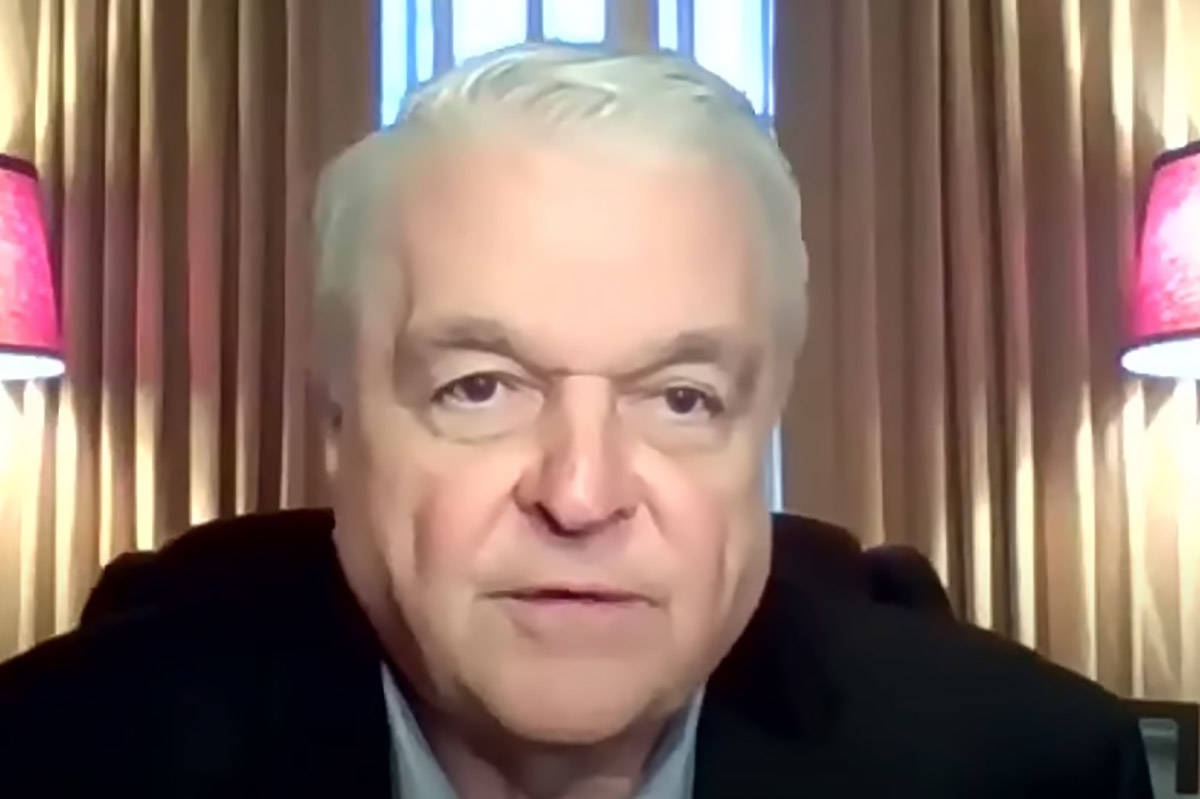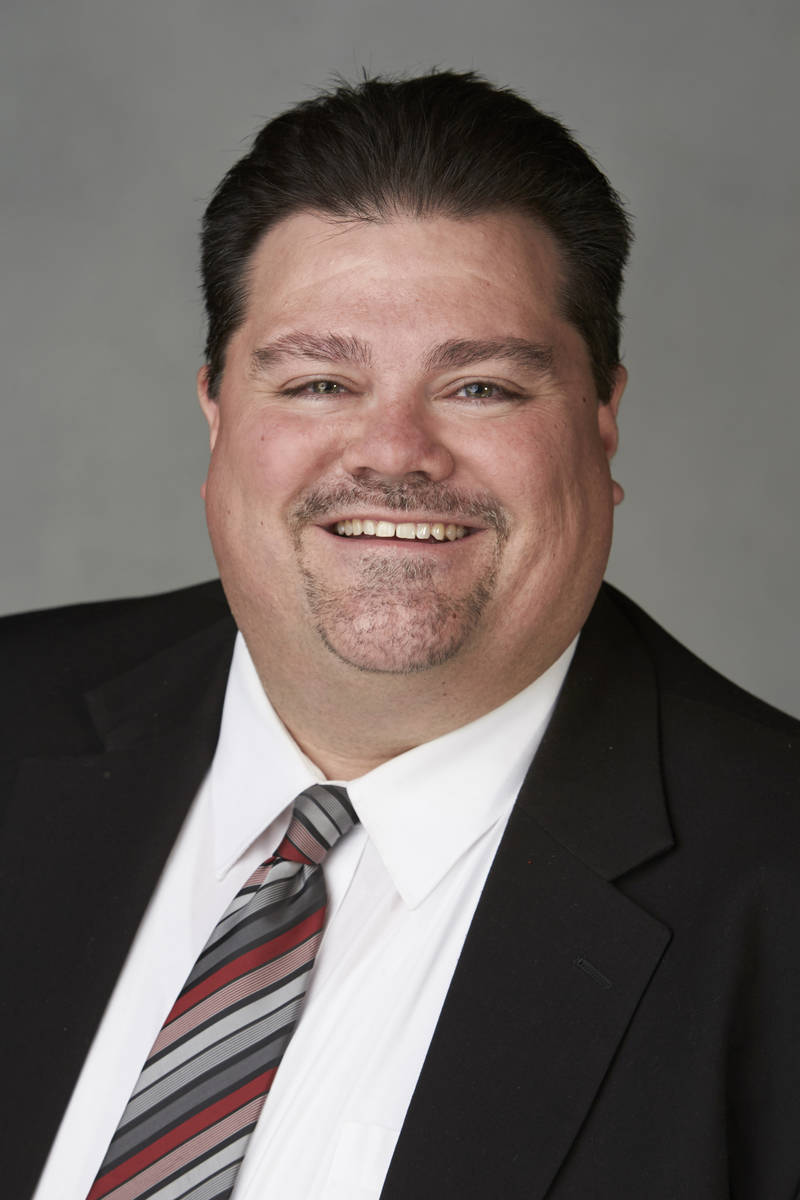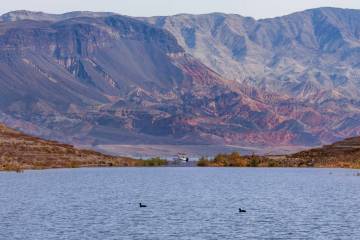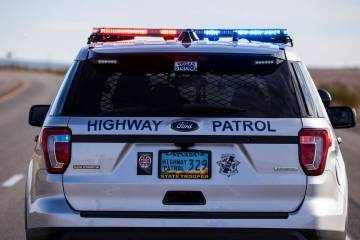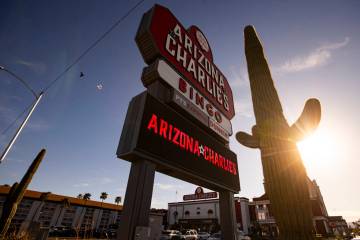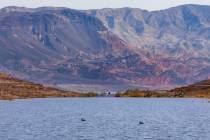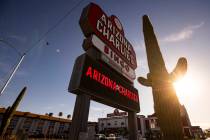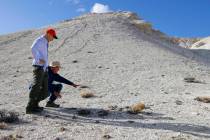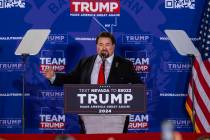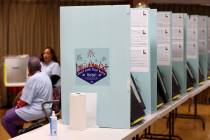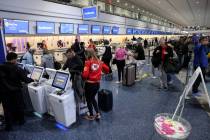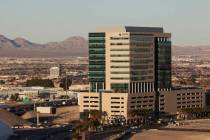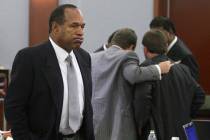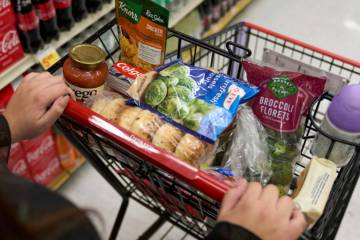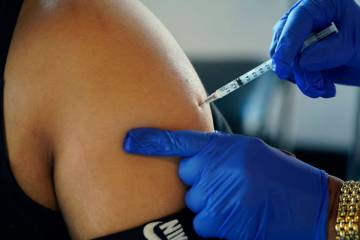What’s the science behind COVID business capacity limits?
New restrictions imposed on restaurants and other businesses this week by Gov. Steve Sisolak to curb the spread of COVID-19 raise a question: What’s the science behind them?
The science is imperfect, broad in stroke and balanced by policy and political considerations, health authorities said.
“The basic idea is we are trying to reduce the density of people in any environment,” said epidemiologist Brian Labus, a member of the governor’s medical advisory team on COVID-19.
North Carolina State professor Julie Swann said the governor’s directive reflects what is known about how the virus is spread, primarily by respiratory droplets in the air.
“I’m sure that at a very high level, it was based on science in the following way: The more people that get together, the greater the chance of infection. You can find tons of articles that would support that,” said Swann, who served as a science advisor for the H1N1 pandemic response to the Centers for Disease Control and Prevention.
However, detractors have said the new rules seem arbitrary and question what impact they’ll have.
Restaurant and bar restrictions
A key focus of the new measures is on restaurants and bars, where capacity has been reduced to 25 percent from 50 percent.
Asked about the science behind this rule, representatives of the Nevada Department of Health and Human Services pointed to a Centers for Disease Control and Prevention report from September that adults who tested positive for COVID-19 were twice as likely to have reported dining at a restaurant than those who tested negative.
“Eating and drinking on-site at locations that offer such options might be important risk factors associated with SARS-CoV-2 infection,” the report concludes.
Swann noted that a study in China found that the virus was spread to restaurant diners eating at separate tables. The study recommended increasing space between tables and improving ventilation.
But is there research that has found that 25 percent capacity is safer than 50 percent?
“There isn’t a specific scientific study that says 50 percent is better than 40 percent or different than 60 percent,” said Labus, an assistant professor at UNLV.
Labus said the reduction was as much a policy decision as a scientific one. “We had to come up with things that make sense and that people can follow. It’s easy, it’s not a complicated formula.”
“The other option would have been to completely shut restaurants down,” he said, as was done in California, where indoor dining has been prohibited across much of the state.
“You could easily say, ‘let’s close all restaurants’ and eliminate that (risk) completely. You have to think about the economic considerations, as well,” he said.
“So the decisions might be driven by science, but they are political decisions as well.”
Another new restriction limits the number of diners at one table to four. Is there science to back up that specific limit?
No, Labus said. But the reduction makes it less likely that the people gathering at the table will be from more than one household, reducing the potential for disease transmission.
And what’s the thinking behind the new rule requiring reservation at bars and restaurants?
“For dining in, you need to have a system in place to ensure that you’re not overcrowded at any one time,” Labus said.
Isn’t that what capacity limits are for?
Requiring reservations will keep people from congregating outside a restaurant to where it “looks like the outside of every restaurant on Mother’s Day,” he said.
Reservations at fast-food restaurants — really?
“By saying all restaurants, it simplifies the process, though obviously it’s not going to work for everyone,” said Labus, adding that food could be taken to go.
The new restrictions also limit capacity to 25 percent at gyms, dance studios, fitness centers, museums, aquariums and other leisure facilities.
During a press call Monday, state officials with the governor’s office and the Department of Health and Human Services did not specifically address a question about whether COVID-19 cases had been traced back to gyms. Julia Peek, deputy administrator with the Department of Health and Human Services, expressed the difficulty in trying to pinpoint where an individual who has been to multiple locations might have contracted the virus.
However, Swann noted a South Korean study indicating that dance fitness instructors had spread the virus to some of their students. The study concluded that “intense physical exercise in densely populated sports facilities could increase risk for infection.”
Size of gathering restrictions
The new restrictions also reduce the size of permitted public gatherings to 50 from 250, or 25 percent of occupancy allowed under fire code, whichever number is lower. This restriction affects venues ranging from places of worship to indoor movie theaters to casino showrooms.
During the press call, Peek said that there had been cases associated with churches in Clark and Washoe counties and rural Nevada. She referred reporters to local health districts for more information.
However, a spokeswoman for the Southern Nevada Health District said that community-wide transmission makes it difficult to identify specific sources of infection.
“We haven’t identified one event or location as the biggest source of the spread of COVID-19,” spokeswoman Stephanie Bethel said.
“As has been stated, activities with close contact, where face coverings are removed, where there is singing, and other actions that occur in close proximity and people are not wearing masks can increase the risk of transmission,” she said in an email. “By keeping people further apart, the less likely that airborne droplets of virus would come into contact with other individuals.”
A CDC report details how a choir practice in Washington state attended by 61 people resulted in at least 32 people becoming sick with COVID-19 and two deaths.
“The potential for superspreader events underscores the importance of physical distancing, including avoiding gathering in large groups, to control spread of COVID-19,” the report states.
Karen Duus, a virologist at Touro University Nevada in Henderson, said that the governor’s directive appears to be aimed at preventing superspreader events of all types.
At large gatherings, “If you have one person in there who’s shedding a lot of virus, they can infect a lot of people,’ said Duus, an associate professor at the medical school.
“At this point, I think they’re just trying anything,” she said. “They’re trying not to have to close things down.”
Although there may be questions about the rationale behind it, Duus believes the governor’s directive underscores that the situation has become more dire than some members of the public have grasped.
“I don’t think it’s going to sink in until we have no ICU beds and people are dying of heart attack and dying of stroke and dying of other things because there are no beds left,” she said.
Contact Mary Hynes at mhynes@reviewjournal.com or 702-383-0336. Follow @MaryHynes1 on Twitter.



